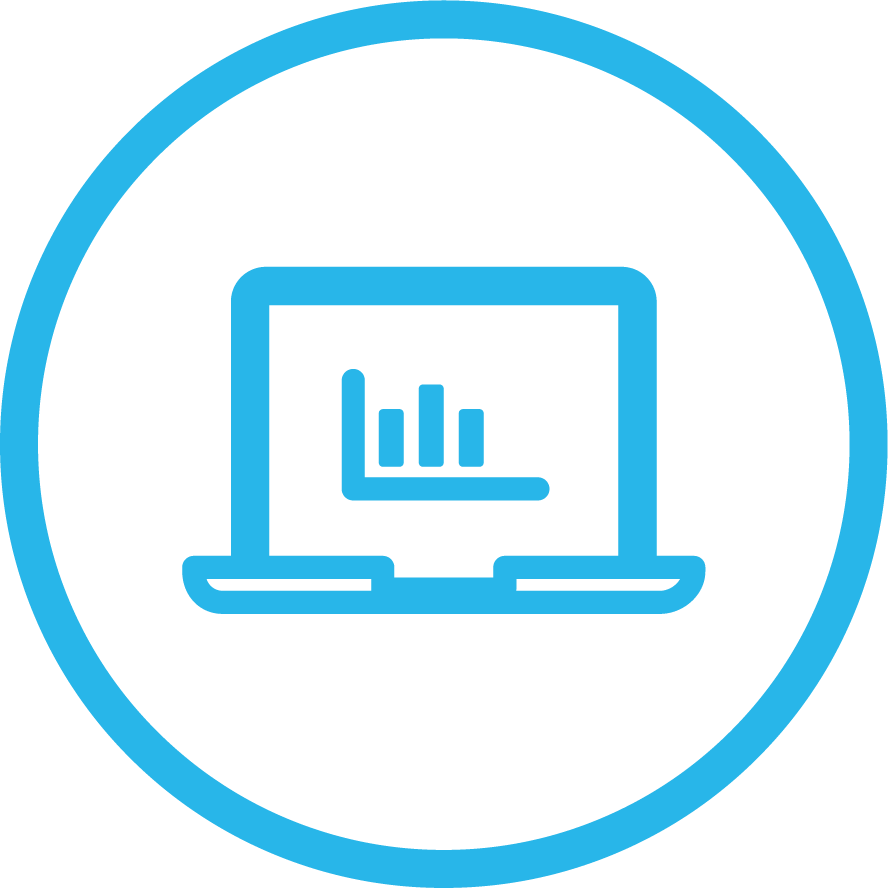TECHNOLOGY
SCALABLE, EXTENSIBLE, AND COLLABORATIVE
The technology that powers the data economy
GLOBAL RESEARCH RESULTS
LEARN HOW TO BECOME A DATA-FORWARD BUSINESS
How many organizations have the right technology to thrive in the data economy? We have identified 10 attributes of an organization’s data infrastructure that will help enable it to take advantage of the opportunities. For starters, organizations need platforms and solutions that are scalable, extensible, and collaborative.
But not many organizations have this kind of infrastructure.
of the IT executives we surveyed say the data solution they use is “easily scalable and elastic.” Without access to near-unlimited computing, the insights an organization can reveal and act on are limited.
can share and access live data in near-real time without having to copy and move it. Seamlessly collaborating with data within and beyond the boundaries of an organization is the new competitive advantage.
can integrate external data from new sources in near-real time. Your insights are only as deep and as wide as the amount of varying data you can access and analyze.
A small group, however, is much stronger when it comes to technology. These are the organizations we call the Data Economy Leaders, and they are outperforming their peers.
TECHNOLOGY: ONE OF THREE KEYS TO DATA ECONOMY LEADERSHIP
PEOPLE
The human touch, and the required skills
PROCESS
How teams are enabled and aligned to drive innovation with data

TECHNOLOGY
The infrastructure that supports your data economy strategy
Here, we look at the crucial attributes of data economy technology—scalability and power, interoperability and extensibility, and data collaboration—and find out how the Data Economy Leaders are excelling with all three.
SCALABILITY AND POWER
Accessing and participating in the data economy exposes any organization to a near-infinite amount of previously unseen insights. But those insights come from data—exponentially more data available than any organization already has access to.
Some solutions can struggle to deliver the scale and power needed to store, integrate, analyze, and share that data without significant overhaul. And when they do scale up to meet peak demand, are they elastic? Can they scale back down to minimize overhead?
More than twice as many Data Economy Leaders as Laggards (the group at the other end of the spectrum) describe their data storage and management technologies as “easily scalable and elastic.”
A modern cloud data platform could help Data Economy Laggards by supplying near-instant and infinite storage and computing that can scale up and down—and on the fly. This solution should also be flexible in order to centralize, integrate, analyze, and share various types of structured, semi-structured, and unstructured data. The Data Economy Leaders are much more likely than Laggards to use one or more modern cloud-based platforms to deliver data-driven insights.
Where organizations store their data can determine how scalable and extensible their solution will be. Most store some or all of their data in the cloud. But using a single cloud data platform can give organizations the power they need to accommodate their data and the data they access by participating in the data economy.
The vast majority of Data Economy Leaders store their data in the cloud
Base: 250 IT Executives
“Our data infrastructure opens the door to a scalable and agile [cloud data] platform, on which customers can easily access data sets,” said Bhaskar Peddhapati, Head of Global Platform Engineering at NielsenIQ. “This allows them to extract the data they need to fit their own technology strategy.”
A cloud platform can also accelerate the pace at which organizations acquire data, and can shorten the time it takes to analyze data. Our research suggests that most organizations—even the Data Economy Leaders—need to get more acceleration out of their data platforms and applications.
say it takes on average eight days or longer to source, integrate, and prepare new data for access and analysis by business users. Today’s cloud data platforms, and the data marketplaces they enable access to, can reduce this to a fraction of that time.
say it takes 30 minutes or longer to query all of their sales data to determine gross revenue by region and time frame. Depending on the cloud data platform, a query such as this can take a few minutes or less.
Our data infrastructure opens the door to a scalable and agile [cloud data] platform, on which customers can easily access data sets. This allows them to extract the data they need to fit their own technology strategy.
— BHASKAR PEDDHAPATI,
Head of Global Platform Engineering, NielsenIQ

INTEROPERABILITY AND EXTENSIBILITY
To generate insights, organizations need a continuous flow of data. And for this they need robust and reliable data pipelines.
Participating in the data economy involves gathering data from a variety of sources—external as well as internal—including partners and commercial data providers. So building data pipelines often means connecting to third-party services and libraries, and in a way that enables data to move freely in and out of the platform.
Most of our surveyed organizations struggle with this: only 22% of respondents say their data management solution integrates well with complementary tools and solutions.
Many organizations are struggling with their data infrastructure
Share of respondents agreeing with statements about the technology their organization currently uses to store and manage data
Base: 250 IT Executives
A mandate to become more data-forward is important. But for CEOs and other senior leaders, it is just the start. “They must be consistent and vocal advocates of the data strategy,” said Bernard Marr, a business futurist and author of Data Strategy.
The CEO does not have to be a data or technology professional, but they should be able to articulate, clearly and loudly, what data-driven insights mean to the business. And the CEO should empower their CDO to implement the organization’s data-forward strategy.
DATA COLLABORATION
When it comes to data, collaboration means the secure and governed methods of sharing and accessing data, data services, and data applications within organizations and with external parties. This is the essential business of the data economy.
Chief data officers (CDOs) and chief information officers (CIOs) must ensure their cloud data platform and applications make sharing as seamless and reliable as possible—wherever data and business users are located, locally and globally.
Tom Mazzaferro is CDO of Western Union, which has more than half a million retail/agent locations worldwide that rely on exchanging data with headquarters to serve customers. "We’re now able to share data on settlements with our agents and digital partners on a daily basis through the use of a private exchange,” said Mazzaferro. “They don’t need to upload it any more—they can just access it instantly and go. It’s more secure. It’s encrypted. And it enables us to keep and store data in a single place, rather than having it leave our firewall and our environment."
There are other technology attributes that underpin data collaboration. It has to be versatile, for instance, to execute diverse analytic workloads, such as data warehousing, data lakes, data science, and data engineering, and be the development platform for modern data applications.
The technology must also be secure, resilient, and governed. So it has to protect data at rest and in transit, and provide for remedial actions, across regions and clouds, if there is an outage. It must also ensure that the data management meets industry and regional privacy regulations—wherever it is.
We’re now able to share data on settlements with our agents and digital partners on a daily basis through the use of a private exchange. They don’t need to upload it any more—they can just access it instantly and go. It’s more secure. It’s encrypted. And it enables us to keep and store data in a single place, rather than having it leave our firewall and our environment.
— TOM MAZZAFERRO,
Chief Data Officer, Western Union

10 FEATURES OF TECHNOLOGY FIT FOR THE DATA ECONOMY
Scalable and elastic
As mentioned above, a cloud data platform should manage a near-unlimited amount of data and provide almost instant and near-limitless scale, concurrency, and performance.
Flexible and powerful
The days of organizations having to establish different data stores for different data types is coming to an end. A single platform should easily centralize, integrate, analyze, and share different types of previously siloed data, including structured, semi-structured, and unstructured data.
Interoperable
No one solution can do it all. Data professionals of all backgrounds should have the ability to connect a cloud data platform to nearly any complementary solution, so they can enable data to move freely to and from the data platform and these solutions.
Global
Public cloud providers are just as competitive as their on-premises database ancestors. That means SaaS companies must deploy the same data management solutions and applications across multiple providers—tripling the expertise and overhead required. To minimize this, a cloud data platform should deploy a single code base across major public clouds and their regions, and provide a seamless cross-cloud experience no matter where data, applications, and data users are located.
Collaborative
Modern data sharing is the backbone of operating successfully in the data economy. A platform that offers seamless and near-instant data sharing can enable any number and combination of individuals and organizations to provide and consume live data, insights, and data services across an organization, between organizations in the same business ecosystem, and globally.
Versatile
In addition to data sharing, a data platform should enable an organization’s data professionals to execute the diverse analytic workloads that complement and enable data collaboration, such as data warehousing, data lakes, data science, data engineering, and data security.
Data applications
Extending the technology of a cloud data platform can deliver exponential benefits to an organization’s data landscape. Having the ability to build modern data applications on top of the data platform for deployment within an organization, in partnership with other organizations, or be made commercially available, can derive maximum value from nearly all available data.
Secure, resilient, and governed
Collaborating with data requires sound data security and governance. Such features should be baked into a cloud data platform in order to protect data at rest and in transit, and deliver seamless failover and failback features across regions and clouds in case of an outage. The platform should also organize and control data to meet industry and regional data privacy regulations, wherever the data is located.
Consumption-based
Access to near-instant and near-unlimited data storage and computing power requires efficient and responsible usage. A cloud data platform should offer per-second pricing for the storage and computing resources used by an organization, and the ability to track, control, and meter consumption across the organization’s different departments and geolocations.
Hassle-free
There are many permutations of how much of the administration and management of a data platform can rest on the customer. On-premises require the most, while SaaS should require the least. A cloud data platform that enables access to the data economy and is at the center of an organization’s data strategy should be fully managed by the platform vendor, minimizing platform maintenance and administration so that a customer’s IT and data professionals can focus on high-value, strategic projects.
THE BOTTOM LINE
Find out more about what it takes to be a leader in the data economy by downloading our ebook overview.